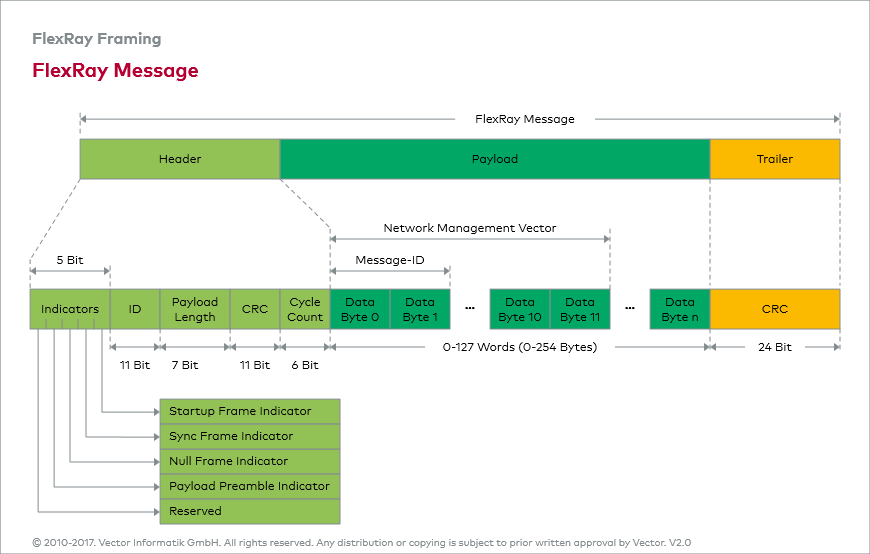Frame Header
Data transmission in a FlexRay cluster is executed using a uniform message frame (FlexRay message). Each FlexRay message is composed of three parts: header, payload and trailer. The header consists of 40 bits. Of these, eleven bits belong to the identifier (ID). This identifies a message and corresponds to a slot. All IDs may be used freely. One exception is ID=0x00: this is used to identify invalid messages.
The ID is preceded by four indicator bits, which in turn are preceded by a reserved bit. The indicator bits serve to specify a message more precisely. The payload preamble indicator indicates whether a network management vector is being transmitted in the payload of a static message or whether a message identifier is being transmitted in the payload of a dynamic message.
In special cases the sender may transmit the payload of a message exclusively with zeros. This is not a regular payload. To indicate whether the payload is regular or invalid, there is the null frame indicator. The sync frame indicator indicates whether messages transmitted in the static segment are being used as sync frames in the context of synchronization. The startup frame indicator indicates whether the message transmitted in the static segment is being used as a startup frame in the context of startup.
The identifier is followed by the payload length. It shows the size of the payload in words and consists of 7 bits. A total of 254 bytes may be transported with one message. The identifier is protected by a CRC method. The payload length is followed by an eleven bit long header CRC sequence whose calculation is based on the identifier, payload length, sync frame indicator and startup frame indicator and a generator polynomial defined by the FlexRay specification.
The header is completed by the cycle counter. This comprises six bits and represents the number of the cycle in which the message is sent. The cycle counter always counts up to 63.

